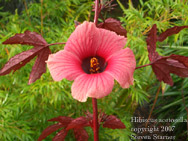 Hawaiian Tropical Plant Nursery, LLC
Hawaiian Tropical Plant Nursery, LLC
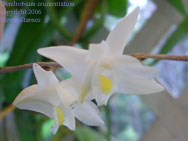
 Hawaiian Tropical Plant Nursery, LLC
Hawaiian Tropical Plant Nursery, LLC

To Order visit our online store:
http://www.store.hawaiiantropicalplants.com
We ship to all 50 states.
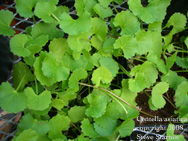 |
Centella asiatica-Family: Apiaceae. Formerly classified as Hydrocotyle asiatica. Common Names: Brahmi, Gotu Cola. Used in Ayurveda. Fast growing short herb. Puts out numerous runners. Best grown in a bulb pan or other shallow wide pot. Full sun. Keep wet. |
| Copaifera langsdorfii- Family: Fabaceae. Common Names: Diesel tree, copaiba. Trees are tapped for hydrocarbon rich sap that can used as a diesel substitute with apparently minimal processing. Also, used to produce lacquers. Also, resin is reported to have a number of medicinal uses. Native to tropical forest of Brazil. It is not reported to be cold tolerant and can only be grown in the tropics. Growth rates are moderate in young plants. Ultimate height is reported to range from 6 to 35 meters; it likely depends on soil and growing conditions. | |
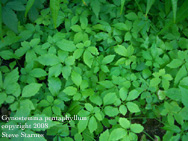 |
Gynostemma pentaphyllum-Family: Cucurbitaceae. Common Name: Jiao gu lan. Palmate leaved vine native to southern China. Leaves are used for a sweet tea. Reported to be high in antioxidants and have a rejuvenative effect. Seems to be easy to grow in Hawaii. Vines a bit slow when young but grow fast once established. Grow in partial shade. Slightly acidic soil high in organic matter. Reported to be hardy in Zone 8. |
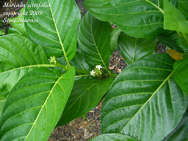 |
Morinda citrifolia- Rubiaceae. Common Name: noni. Bush with large glossy leaves. Fruit is used medicinally. Fruit changes from green to yellow or white when ripe. However, ripe fruit is foul smelling; resembles rancid cheese. There are many claims for the health benefits of the fruit. Research is in progress at some universities to confirm some of the reported claims. Fruit ripens year round in Hawai'i. Fruit production is heavier during hot sunny periods. Grows best at lower elevations. Drought tolerant. Grows well even in poor rocky soils with little fertilizer. |
| Leonotis leonurus- Common Name: Wild Dagga. Sometimes planted as an ornamental due to bright orange flowers. Native to South Africa and hardy to light frost. Leaves are sometimes smoked as a euphoric. Full sun. Keep moist. Growth is fast. Seeds germinate readily. Outdoors in USDA Zones 9 to 11. Spider mites seem to be the major problem in warm humid conditions. | |
| Macropiper excelsum- Family: Piperaceace. New Zealand Kawakawa. Large shrub. Leaves are used to make a tea. Similar to kava but above ground portions of this species can be used. Seed germination is erratic. Plants are dioecious. Fruit is edible but can have a laxative effect. Reported to tolerate moderate brief frost down to 28F to 29F. Grows best in areas that do not experience extremes in temperature. This species does not thrive in our warm wet environment; so I don't expect to ever be able to provide this species. | |
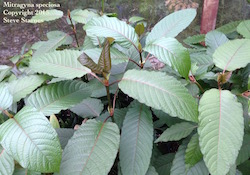 |
Mitragyna speciosa- Family: Rubiaceae. Common Name: Kratom. Small to medium tree native to Thailand and Malaysia. Leaves are used to relieve pain. Since it is reported to be habit forming, it should only be used for brief periods at a time. Best used under the direction of a herbalist or physician. Well drained slightly acidic soil. Fertilize with a balanced general purpose garden fertilizer with micronutrients. Outdoors in Zone 11. I don't expect this species to tolerate cool temperatures. We are growing a red veined variety; seeds were imported and noted to be from the Rifat cultivar. Online Store: http://www.store.hawaiiantropicalplants.com |
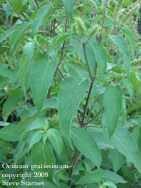
|
Ocimum gratissimum- Common Names: Vana Tulsi, Tree Basil. This is a perennial shrub in the tropics. Fast growth reaching 3 or 4 ft. tall in a single season. Similar uses to O. sanctum in Ayurveda. Has a similar clove-like taste but is a bit more pungent. Full sun. Keep moist. Protect from cold temperatures. If you are in an area that has cold winters, keep in a large container and bring into a greenhouse or sunroom before danger of frost. Invasive in Hawaii; so I stopped growing this one. |
 |
Paullinia yoco- Family: Sapindaceae. Common Name: yoco. Large vine native to tropical rain forest in South America. Stem bark has about 2.7% caffeine and some other alkaloids. Popular among native tribes in the western Amazon. Used as a stimulant. Pinnate leaves emerge bright red and mature to medium green. Young plants seem to prefer light to medium shade. Slightly acidic soil high in organic matter. Very young plants are slow to establish but once they reach about a foot tall they are more robust. Growth becomes fast in the 2nd year. This plant is related to guarana. |
| Picralima nitida- Family: Apocynaceae. Common Name: Akuamma. Native to tropical regions of West Africa. Small tree with glossy deep green leaves. Large seed pods. Young plants grow slowly for the 1st year but speed up once established. The seeds have medicinal uses. Should be used only with the direction of an experienced herbalist or physician. Prolonged use may result in liver toxicity. For Availability and Ordering visit our online store: http://www.store.hawaiiantropicalplants.com | |
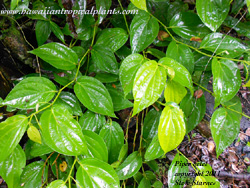 |
Piper betel-Family: Piperaceae. Common Name: betle leaf. large cordate leaves are used to wrap a mixture of spices and betel nut in India. Meetha pan is a sweet spice mix without the betel nut and tobacco that I prefer. Chewed after meals. In vitro studies have found that the eaves have antioxidant properties. One study found that it prevented ulcers in rats. Vigorous woody vine or some varieties can be a scandent shrub. Rich well drained soil high in organic matter. Best in light to medium shade. Support is required for the vine. If conditions are humid, it will send out roots at each node. I have several selected varieties. Most have very strongly scented leaves with a smokey spicy scent when crushed. Yapis cultivar (from Yap island) has larger leaves than the other varieties. |
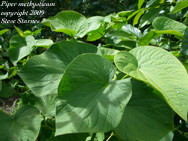 |
Piper methysticum- Family: Piperaceae. Common Name: kava, awa. Roots are used to make a beverage. Use only subterranean portions of the roots and stem base. Taste is earthy and peppery. Relaxing and in large quantities intoxicating. Used as a social drink throughout the Pacific basin. Medicinally it is used to treat anxiety and depression. Cordate leaves. Stems range from black to light green depending on the cultivar. A number of cultivars have been selected on different islands across the Pacific. They do not produce seeds. Propagated by stem cuttings. Many cultivars are susceptible to shot hole disease caused by a fungus. Results in decreased plant vigor and may even kill plants. This can be controled with neem oil, sulfur or several strains of antifungal bacteria. I have several cultivars: Mo'i is a black stemmed Hawaiian strain high in kavalactones. Hina is from Tonga and has green stems with dark green raised spots. Rahmadel is a green stemmed Micronesian cultivar. Isa from New Guinea has large leaves and spotted stems; this cultivar is very disease resistant. Issa is reported to be very potent and only a little is needed. I've just started growing Honokane Iki which seems to be very vigorous; it is susceptible to shot hole but seems to be a bit more vigorous than many other Hawaiian cultivars. I just added Opihikao to my collection in 2016; may take a couple of years to propagate. For Availability and Ordering visit our online store: http://www.store.hawaiiantropicalplants.com |
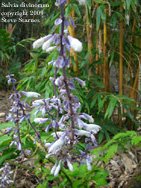 |
Salvia divinorum- No longer available; we do Not sell this plant. It has been moved to Schedule 1 by the State of Hawaii. Tropical Salvia native to Mexico. White flowers with purple bracts. Leaves are large and light to medium green. |
| Syzygium aromaticum- Family: Myrtaceae. Common Name: Cloves. The dried flower buds are the part used for flavoring. Medium tree that begins to bloom at about 6 years old; maybe sooner under ideal conditions. Densely branched. New growth is red. Prefers full sun. Soil high in organic matter. Young plants are slow growing but once they reach about 12 inches tall, they become more vigorous and growth rates become faster. Outdoors in USDA Zone 11. | |
| Withania somnifera- Family: Solanaceae Common Name: Ashwaganda. Important ayurvedic herb. Roots are used for their rejuvenative effect. Uses are similar to ginseng. However, it is not botanically related to ginseng. Grows about 2 ft. tall. Produces berries enclosed in a papery husk. Full sun. Well drained soil. Easy to grow. Seeds germinate over several months. Barely covering seeds with course sand so that they are exposed to light speeds and improves germination. |
To Order Visit our online store: http://www.store.hawaiiantropicalplants.com
Follow us on Facebook
Frequently Asked Questions
Email: steve_starnes@yahoo.com (you will need to copy and paste the email address)
Open by Appointment Late Afternoons and Weekends
Hawaiian Tropical Plant Nursery, LLC
P.O. Box 1511
Kea'au, Hawaii 96749
Email is the best way to reach me. Located on the Big Island ~15 miles from Hilo